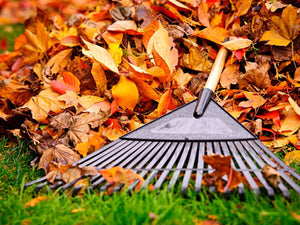Xeriscaping 101: How to Create a Stunning, Waterwise Garden in Dry Conditions
Types of gardensIf you’re facing water restrictions, drought, or a dry climate, you’ve still got some great options for creating a beautiful garden. With xeriscaping and waterwise gardening, you can create a beautiful, low-maintenance garden that thrives in dry conditions while conserving water and reducing costs.

Why Xeriscaping and Waterwise Gardening Matter
Lush gardens and green lawns are popular and can be lovely, but they also require a lot of resources and maintenance. Dry environments, drought, and water restrictions can make this type of growing extremely difficult and expensive. That’s why so many people are turning to xeriscaping as an environmentally-friendly, low-maintenance alternative to traditional gardens and lawns.
Xeriscaping is a type of landscaping that uses native plants and requires minimal water and maintenance. It lowers the maintenance needs of your garden and allows you to cut back on the use of pesticides and fertilizer.
Water-wise landscaping focuses on functional gardens and landscapes that conserve water and protect the environment.
Rock gardens are a type of xeriscape that use rocks, gravel, and other materials to create a drought-tolerant landscape. This type of landscaping can reduce your water usage by up to 80%.

Step 1: Plan & Design Your Waterwise Garden
Effective xeriscaping starts with a plan. Group plants by their water needs, choose sun-appropriate locations and design your landscape to minimize water waste and maintenance.
Tips:
- Group high-water and low-water plants separately
- Use rocks and paths to define zones
- Consider water runoff patterns
Step 2: Choose Drought-Tolerant Plants for Xeriscaping
When selecting plants for your xeriscape or waterwise garden, look for varieties that are native to your area and require little water. Desert plants and alpine plants are often well-adapted to rocky or dry conditions. Choose plants that are well suited to the amount of sun and shade in your garden.
Herbs for Xeriscaping
Several herbs may thrive in your xeriscape or rock garden, providing color, scent, and texture. And you can have fresh herbs for your culinary endeavors!
- Lavender - Fragrant and pollinator-friendly
- Sage & White Sage - Iconic herbs for arid gardens
- Oregano - Hardy herb
- Rosemary - Evergreen and drought-resistant
- Creeping Thyme - Lovely, low-growing alternative to turf
Flowers That Thrive in Waterwise Gardens
A dry climate can still support beautiful blooms. Flowers are also an excellent choice because they provide a needed habitat for native insects. These heirloom flowers from Sow Right Seeds add some color to your garden and support local pollinator populations, even in drought conditions.

Step 3: Improve Soil for Better Water Retention
You can choose to adapt your soil to your plants or choose plants based on your soil. Some desert or alpine plants thrive in poor soil, but other xeriscape varieties need rich soil. If you do choose plants that need more organic matter, don’t skip the compost. It will help your soil retain water better, resulting in healthier plants.
Step 4: Irrigation & Water Collection
Think efficiency! Water harvesting and creating channels for runoff can allow your plants to make the most of the rain that does come. Set up rain barrels to collect water to use during a dry spell.
Drip irrigation, soaker hoses, and other methods that get water directly to the roots of the plants are the way to go. Avoid sprinklers or fine mists. Water deeply and infrequently to help your plants establish deep root systems.
Step 5: Limit Turf or Grass
Grass lawns use a lot of water and require a lot of maintenance. Only use grass if it can provide a benefit. Wildflowers, native grasses, and ground covers like creeping thyme can replace grass and require only a fraction of the water or fertilizer. Plus, no more mowing!
Step 6: Use Mulch to Conserve Moisture
Mulching is critical in any xeriscape or waterwise garden. Rock gardens often use inert materials like rock or crushed stone as mulch. Other options for xeriscape include compost or bark chips.
No matter what you choose, use a heavy layer of mulch. It will prevent soil erosion and compaction. Well-mulched gardens keep plants cooler and save water waste. Mulching also suppresses weeds that can compete for nutrients and water.

Step 7: Maintain With Less Effort
After you plant your xeriscape or rock garden, give it time to adjust to its new environment. Water regularly during the first few weeks, and then slowly reduce the frequency as the plants become acclimated.
Once your xeriscape or rock garden becomes established, it will require much less upkeep than a typical garden. You’ll find you need to water less frequently, and you use less fertilizer. Don’t neglect weeding and pruning!
If you live in a drought-prone area, don’t give up on gardening! Take the time to plan it out and choose the right plants and system for your situation. A healthy, well-maintained xeriscape can be a lovely oasis in a dry area, and your rock garden can even be a source of food and habitat for your local ecosystem.
Written by Teresa Chandler








Leave a comment